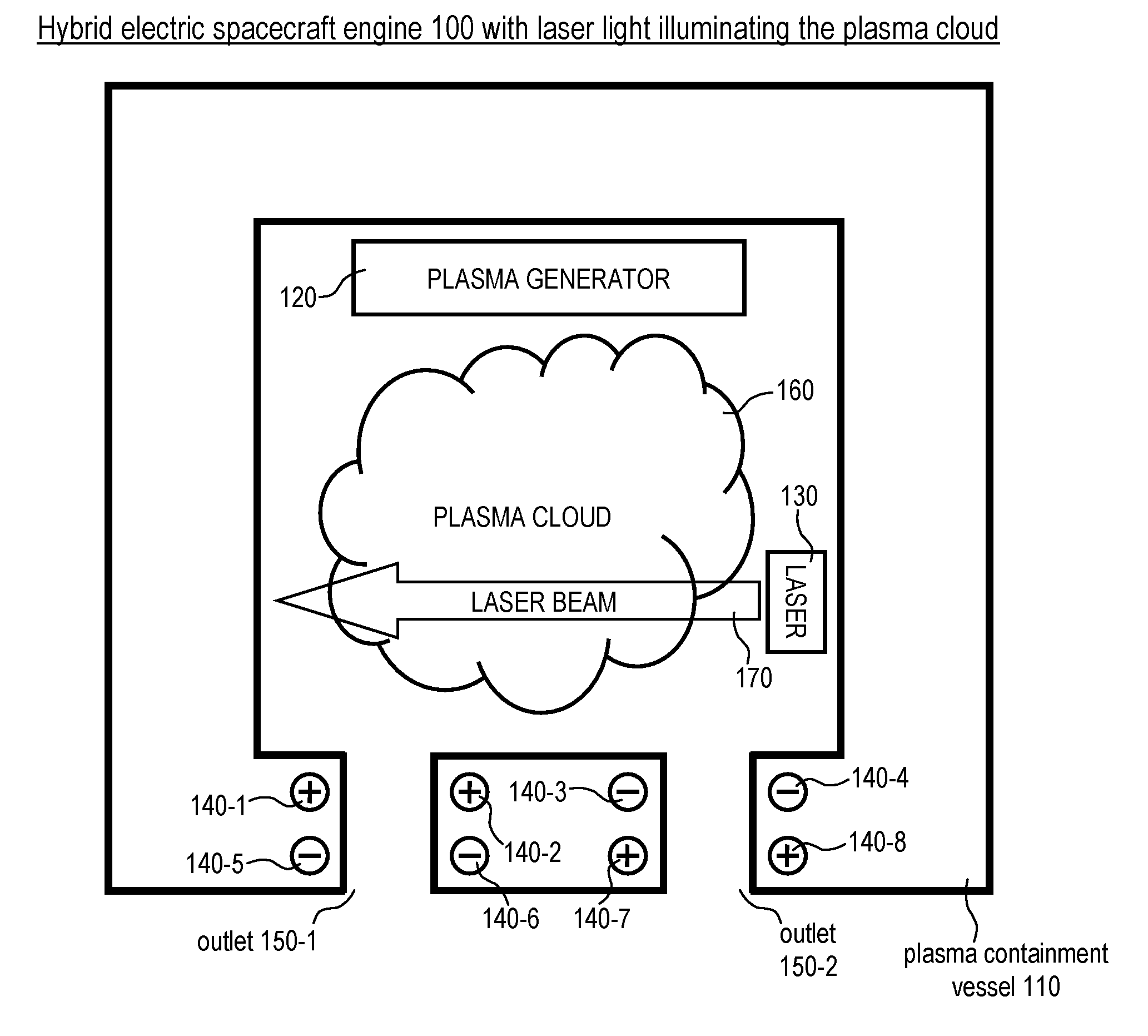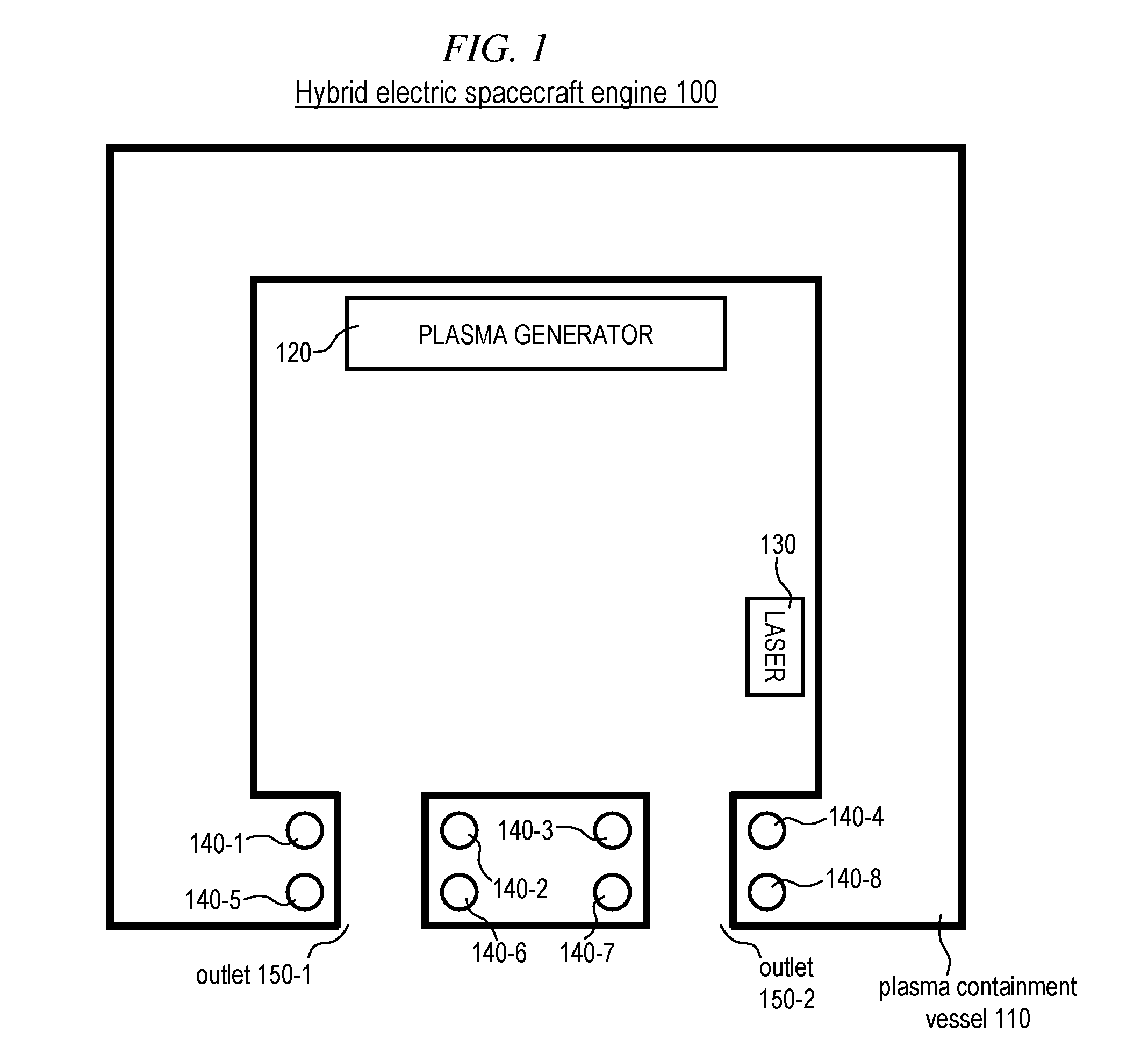Hybrid electric propulsion for spacecraft
a spacecraft and electric propulsion technology, applied in the direction of machines/engines, cosmonautic vehicles, transportation and packaging, etc., can solve the problems of limited expulsion speed of propellant, disadvantages of ion engines, and high energy cost, and achieve the effect of enhancing the flow of electrons and ions through the respective outlets
- Summary
- Abstract
- Description
- Claims
- Application Information
AI Technical Summary
Benefits of technology
Problems solved by technology
Method used
Image
Examples
Embodiment Construction
[0035]FIG. 1 is a diagram that illustrates the structure of hybrid electric spacecraft engine 100 in accordance with an illustrative embodiment of the present invention. Hybrid electric spacecraft engine 100 comprises plasma containment vessel 110, plasma generator 120, laser 130 and electrodes 140-1 through 140-8, interrelated as shown.
[0036]Plasma generator 120 is a device for generating a plasma. It is well-known in the art how to make such a device. For example, such a device might comprise a spark generator for generating an electric spark across the face of a solid surface. The heat of the spark causes some of the solid material to vaporize, and then the mobile electrons of the spark ionize the particles of the vaporized material. Such ionization results in the vaporized material becoming a plasma comprised of free electrons and free positive ions. For example, the solid material might be made of carbon, in which case the positive ions are carbon atoms that have lost one elect...
PUM
 Login to View More
Login to View More Abstract
Description
Claims
Application Information
 Login to View More
Login to View More - R&D
- Intellectual Property
- Life Sciences
- Materials
- Tech Scout
- Unparalleled Data Quality
- Higher Quality Content
- 60% Fewer Hallucinations
Browse by: Latest US Patents, China's latest patents, Technical Efficacy Thesaurus, Application Domain, Technology Topic, Popular Technical Reports.
© 2025 PatSnap. All rights reserved.Legal|Privacy policy|Modern Slavery Act Transparency Statement|Sitemap|About US| Contact US: help@patsnap.com



